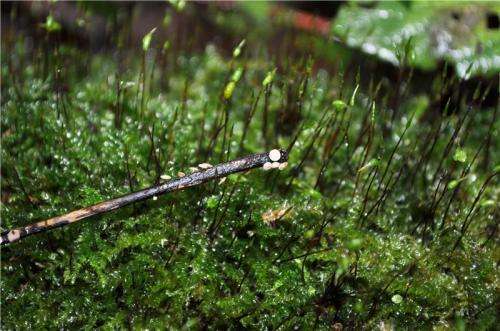The ash dieback fungus, Chalara fraxinea, might have a mechanism to define territory and to combat viruses, research sho

The fungus which causes Chalara dieback of ash trees has the potential to defend itself against virus attacks, research by British scientists has shown.
Plant pathologists Dr Joan Webber, from Forest Research, the research agency of the Forestry Commission, and Professor Clive Brasier found that the defence mechanisms which the Chalara fraxinea (C. fraxinea) fungus uses to defend its territory could make it more resistant to virus-based control methods. Their research findings have been published in the journal Fungal Ecology.
Professor Brasier and Dr Webber studied C. fraxinea's genetic recognition system, called a vegetative compatibility (vc) system, in samples of the fungus from three different UK sites. Their results suggest that for most of these UK samples the fungal colonies are likely to be vegetatively incompatible with each other. This has implications for studying the biology of the fungus and for controlling its spread.
Vegetative compatibility (vc) systems are a fungal equivalent of the tissue rejection systems in humans, enabling the fungus to distinguish between self and non-self. Fungal colonies of the same vc-type can fuse to form a single individual, but those of a different vc-type cannot. Vc systems are central to the ecology and survival of a fungus, enabling it to define its territory, to resist viral attack and to promote outbreeding. Initial results show that the vc system of C. fraxinea generates a reaction between incompatible colonies which makes their filaments (the mycelium) collapse, creating a zone between the two colonies where growth is inhibited.
If the vc system is 'switched on' during early infection of ash leaves, then the spores (ascospores) responsible for infection might antagonise one other which could reduce their ash colonizing ability.
Alternatively, if the vc system is 'switched off', the germinating spores might co-operate during ash leaf infection, leading to a greater spread of the fungus. Later, as larger lesions form in ash tissues, the vc system might define the 'territory' defended by each pathogen individual.
Commenting on their results, Professor Brasier said:
"This research is still at a preliminary stage. The fact that most isolates of Chalara fraxinea are incompatible with each other could mean that it might be difficult to deploy damaging fungal viruses against the pathogen as a disease control method, since viruses usually spread more readily in a fungal population when the colonies are able to fuse."
More information: Brasier C, Webber J, Vegetative incompatibility in the ash dieback pathogen Hymenoscyphus pseudoalbidus and its ecological implications, Fungal Ecology 6(6) 501-512 (2013). DOI: 10.1016/j.funeco.2013.09.006
Provided by Forest Research


















